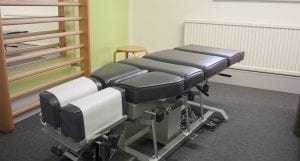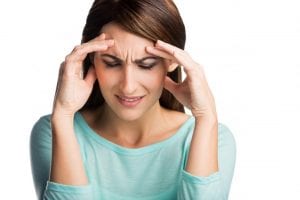Last week, we examined the types of back pain and looked at the way it can affect people – this week, we take a look at the different approaches to treating back pain. We’ll also give you our top tips for dealing with the sudden onset of pain.
I’m in pain now! – First steps to take
So lets start at the beginning with the onset of pain! The correct long-term treatment for low back pain depends upon the cause, as is the case with almost any other condition. Sometimes, low back pain can be brief and will resolve on its own with proper care and support – this is most often the case when your back pain is the result of an obvious injury. Most often, however, low back pain is a chronic problem, with no immediately obvious cause.
While it’s a good idea to see professional help right away, there are some immediate actions you can take, keep these steps in mind as an immediate preventative and care program which you can implement right away.
- Stay active and continue your daily activities as normally as you can – this is generally good advice, however, keep in mind that if your daily habits (for example your sitting posture) are the cause of your pain, this approach could make it worse. For this reason, you should seek a professional evaluation ASAP.
- Remember to take care when lifting or twisting your back, try and avoid this if possible.
- Bed rest is NOT the correct approach to back pain – stay active.
- Do some basic exercises and stretches, as much as you are able – see our section on exercises for lower back pain below.
- In the short term, over the counter non-steroidal anti-inflammatory medicines such as Ibuprofen may assist with pain relief. Paracetamol alone probably doesn’t work well for back pain. Taking medication is absolutely not a long-term solution but might help get you through the day until you can seek treatment.
- You may want to try applying heat or cold treatments to your back. Remember not to apply ice directly to your skin, wrap it in a sock, bandage or towel.
- You may find it helps to sleep with a small cushion between your knees if you sleep on your side. Or with some firm pillows under your knees, if sleeping on your back.
Treatment and prevention options for Low back pain
If you visit your GP with back pain, they will probably encourage you to try self-help measures, and they may give you advice about symptoms to watch out for and how long your symptoms are likely to last. You may be advised to come back if your pain hasn’t settled after an agreed amount of time, or if you develop any other symptoms.
Depending on your symptoms and how they’re affecting you, your GP may also offer you medicines or refer you for other types of treatment. For example, your GP may refer you to a physiotherapist. If your GP suspects your pain has a specific cause, they may refer you to see a specialist. Some treatments are also designed to help you manage your pain rather than to cure it completely. In some circumstances this may be fine, but if you’re looking to be more proactive in your approach to dealing with pain, there are some excellent options available.
Chiropractic care
For many people, chiropractic care is already the first thing they think of when we talk about treatment for back pain. While once it was thought that medication was the best and often the only option available for back pain sufferers, today research has proved that Chiropractic is actually the most effective treatment for low back pain.
For some people, the idea of “chiropractic” is still one which conjures up images of people having their bones “painfully crunched” in a sterile medical-style clinic. The reality couldn’t be further from the truth! At Complete Chiropractic at least, we are a modern, open plan health centre offering not only Chiropractic but also massage, sports therapy, acupuncture and variety of other treatments. In fact, the Chiropractic clinic feels far more like a private gym than a doctor’s office!
Chiropractic does work by guiding the spinal bones (which easily become misaligned) back into the correct position using gentle movements known as chiropractic adjustments. While these adjustments do sometimes cause a “popping” noise (just like when you crack your knuckles) there is absolutely no cracking or crunching of bones – and the process is totally painless. In fact, Chiropractic is so low risk, it’s considered safe and effective for Children and even pregnant women.
So, why is chiropractic such an effective solution for Low Back Pain? Simply put, Chiropractic care addresses the underlying causes of lower back pain, rather than just trying to cover up the symptoms. Specifically, the culprit is usually a common condition called vertebral subluxation, which the result of misalignment of the spinal bones (vertebrae) – chiropractic adjustments correct and prevent vertebral subluxation, thereby reducing, removing and then preventing the reoccurrence of lower back pain. With this in mind, it not surprising that LBP patients who seek out chiropractic care indicate they are more satisfied than those seeking a medication-based approach.
But what do the studies say? – One study of 681 patients receiving either Chiropractic or (Drug based) Medical treatment showed that the Chiropractic patients were much more likely to report improvement and a significant reduction in symptoms[1].
A similar study saw researchers survey 60 Chiropractic and 111 General Practice physicians. At six and 12 months, researchers measured pain intensity and degree of disability, based on recognised clinical scoring tools for each of the patients – Researchers found that a greater proportion of chiropractic patients were satisfied with all aspects of their care and pain reduction than the medical patients. [2]
In a large-scale experiment involving 2,945 LBP patients who visited one of either 14 general practice or 51 chiropractic community-based clinics, researchers again followed patients for 12 months. At a one-year follow-up, researchers measured patients’ health status, LBP duration, pain severity and level of disability. In 80 per cent of their cases, Medical physicians prescribed drugs for the patients assigned to their care. Doctor of Chiropractic gave chiropractic adjustments to 84 percent of their patients. The final results showed that a whopping 34. 1 percent of patients treated by M.D.s reported 12 months of continuous pain. In contrast, only 12 .7 percent of chiropractic patients reported persistent pain.[3]
Another study pooled data on 138 patients with low-back pain that had lasted at least six weeks. Of this group, 93 subjects received chiropractic care, and 45 underwent medical treatment provided by a medical doctor. In this instance, Chiropractic patients were five times more likely to experience relief than were subjects under medical care.[4]
Medicines
If you go to see your GP about low back pain, they will likely recommend that you take over-the-counter non-steroidal anti-inflammatory medicines (NSAIDs, for example, ibuprofen). There’s no question that these medicines can relieve back pain and help you to stay active in the short term – but they won’t work as a long-term solution.
The problem is that pain, at the end of the day, if your bodies way of telling you that “something isn’t right” – so ultimately just covering it up with painkillers isn’t likely to solve the issue. There’s nothing wrong with taking some painkillers or NSAID’s and telling your body “OK, I know there’s a problem and I’ll deal with it later” – but don’t expect that that’s going to deal with the problem.
This is the core reason why the typical medication-based approach won’t usually work in the long term. If over-the-counter NSAIDs don’t help, your GP may offer you a higher dose of an NSAID. Or they may recommend a stronger medicine called an opioid. You may be advised to take this medicine only for a very short time. This is because you may become dependent on them if you take them for a long time. Your GP may also offer you a short course of a muscle relaxing medicine. Alternatively, antidepressant medicines are sometimes offered for low back pain, in the belief that they can work as painkillers for this condition. The latest expert guidelines do not recommend using these medicines for low back pain, but they are sometimes tried.
Some medications can and do provide short-term relief – but there are some substantial drawbacks to keep in mind. Let’s look at just a few common options.
Paracetamol was once the preferred medicine for non-specific low back pain based on the view that it was cheap, safe and effective. While paracetamol might be cheap (and safe in the short term) It wasn’t effective. A systematic review including three randomised controlled trials concluded there was high-quality evidence that paracetamol was no more effective than placebo for acute non-specific low back pain.[5]
A second common option are the Non-steroidal anti-inflammatory drugs or NSAIDs which we already mentioned. Unlike paracetamol, evidence shows that NSAIDs can have a positive effect – A systematic review including 35 randomised trials found moderate- quality to high-quality evidence that NSAIDs reduce acute non-specific low back pain by about 6 points, and chronic non-specific low back pain by about 11 points, on a 100-point scale.[6]
The problem there is that 11 points is not very much – so that overall the study showed that the effects are too small to be considered worthwhile by the typical patient over the long term. NSAID usage must also be balanced against the risk of long-term consumption – some studies have shown evidence that NSAIDs may slightly increase the risk of heart problems, and it is well known that they carry well-known gastrointestinal and renal risks.
The stronger option, opioids, carry some significant dangers – in fact, they often just make people more ill. In 2014, nearly half of the prescriptions that Australian general practitioners provided for non-specific low back pain were for opioid or opioid combinations. Approximately 3%–4% of the US population receive long-term opioid therapy. Despite this, there have been no randomised placebo-controlled which have properly investigated opioids for acute non-specific low back pain. One of the biggest problems in this regard has been the fact that more than half of patients cannot tolerate opioids and remain well enough to stay in a trial – let alone rely on them as a long-term solution.[7]
Finally, muscle relaxants are sometimes an effective option for some pain sufferers – this might be especially true if your issue is more muscular in nature. That being said, they do come with an array of potential side effects that range from annoying to life-threatening. Indirect comparisons, however, the science shows that Chiropractic, for example, is just as effective in treating lower back pain. A study of 192 participants received either Chiropractic adjustments with placebo relaxants or muscle relaxants with sham adjustments. Subjects receiving actual chiropractic adjustments enjoyed the highest reduction in pain scores, compared with the muscle relaxant group.[8]
Physical or Sports Therapy
A programme of physiotherapy, or sports therapy (with the latter being the better choice for very active individuals or those who suspect their pain may be related to an injury) can be effective in addressing back pain in the long term.
In either case, treatment usually involves an exercise programme, involving physical activity, movement, muscle strengthening aimed at controlling your posture and stretching. Some clinics (such as complete chiropractic) can also offer advanced postural analysis and correction techniques, which can eliminate small issues with the gait or posture – which in turn lead to injury or strain to the spine.
Sports therapy is a hands-on approach which is used to treat and prevent musculoskeletal disorders. Each therapist must be registered with The Society of Sports Therapists (SST). Sports Therapy is a specialist aspect of healthcare which is specifically concerned with the prevention of injury and the rehabilitation of a patient who has sustained an injury back to optimum levels of functional, occupational and sports specific fitness, regardless of age and ability.
It utilises the principles of sport and exercise sciences incorporating physiological and pathological approaches to prepare the participant for training, competition and where applicable, work. This means that while Sports Therapists do spend much of their time working with sportspeople, there’s a great deal we can do to help just about anyone!
Either Physical therapy or Sports therapy usually also involves ‘Hands on’ (manual) therapy, such as massage or acupuncture which may relieve pain in the short term and keep joints and muscles supple in the long term.
Sports massage if often our preferred choice at Complete Chiropractic. Unlike “traditional” forms of massage, Sports massage is a highly specialised form of massage involving the manipulation of soft tissue. Soft tissue is connective tissue that has not hardened into bone and cartilage; it includes skin, muscles, tendons, ligaments and fascia (a form of connective tissue that lines and covers the other soft tissues). Sports massage is designed to assist in correcting common problems and imbalances with the soft tissue which are caused by repetitive and strenuous physical activity, poor posture, strain or trauma from injury.
Sports massage is effective both as a treatment, and as a preventative measure – which makes it an excellent standalone treatment, but even more effective when used in combination with Chiropractic care.
Sports massage has many benefits – when performed by a trained sports masseuse, sports massage can ease muscle pain and tension, speed recovery from injury, relieve back pain and improve posture and mobility. Massage has also been shown to help improve blood and lymphatic circulation and many clients report positive psychological effects too!
Psychological therapy
If you’ve been suffering from back pain for some time, it’s likely that someone (well-meaning or otherwise) may have suggested that “it’s all in your head”. While we certainly don’t think this is the case, it is true that underlying stress and psychological distress can worsen back pain. It’s also true that back pain can cause stress and psychological distress, leading to a vicious cycle!
In this case, it might be valuable to seek some kind of psychological treatment with a view to resolving these underlying issues. For many people, just visiting a clinic like Complete Chiropractic, and speaking to a professional who understands your problem and takes you seriously can really help – but there are many other mental health specialists who may be able to assist.
If you find your back pain is causing you to feel especially upset or worried so that day to day life is becoming challenging or just downright miserable, psychological therapies can often help you cope with your emotions.
Talking therapies such as cognitive behavioural therapy (CBT) or more traditional Counselling or more alternative approaches such as Hypnotherapy can help you to understand your thoughts, feelings and actions, work to resolve any underlying psychological issues and change the way you react to and cope with pain.
You may also find relaxation techniques useful. These may include simple techniques such as breathing exercises, more structured approaches such as Yoga, or spiritual angles such as meditation.
Many people also benefit from massage (also available at Complete Chiropractic) as a way to manage and temporarily reduce pain and increase relaxation while undergoing longer-term treatment for back pain.
Surgery
Surgery is only very rarely suitable for people with lower back pain. Surgery will usually only be suggested if no other treatments have helped and a specific cause has been identified. Surgery is almost never an appropriate response to non-specific back pain.
As with every procedure, there are some risks associated with back surgery. Ask your doctor to explain how these risks apply to you. Surgery should certainly be considered a last resort unless you do have a specific issue which can be resolved in this way.
Next week, well look at an even better option preventing back pain in the first place!
[1] Spine 2006;31 :61 1-21
[2] J Manipulative Physiol Ther 200 I ;24 :543-51
[3] J Manipulative Physiol Ther 2001 ;24:92-100
[4] J Manipulative Physiol Ther 200 I ;23 :239-45
[5] Machado GC, Maher CG, Ferreira PH, et al. Efficacy and safety of paracetamol for spinal pain and osteoarthritis: systematic review and meta-analysis
[6] BMJ 1995 ;31 I :349-351
[7] J Manipulative Physiol Ther 2004 ;27 :388-98
[8] J Manipulative Physiol Ther 2004 ;27 :388-98

